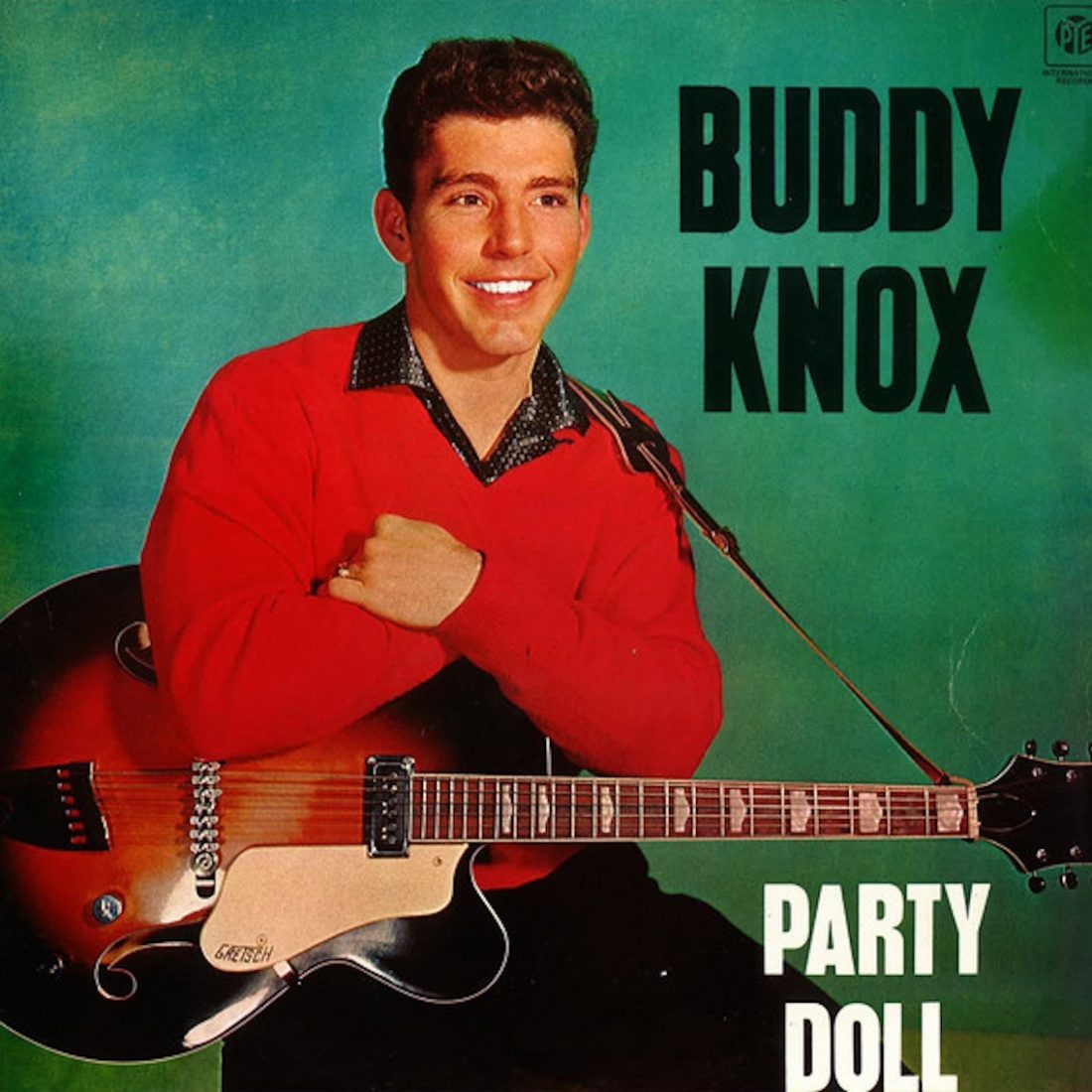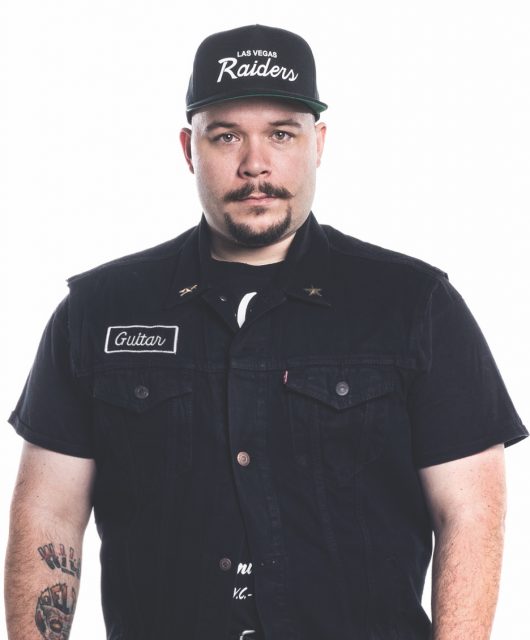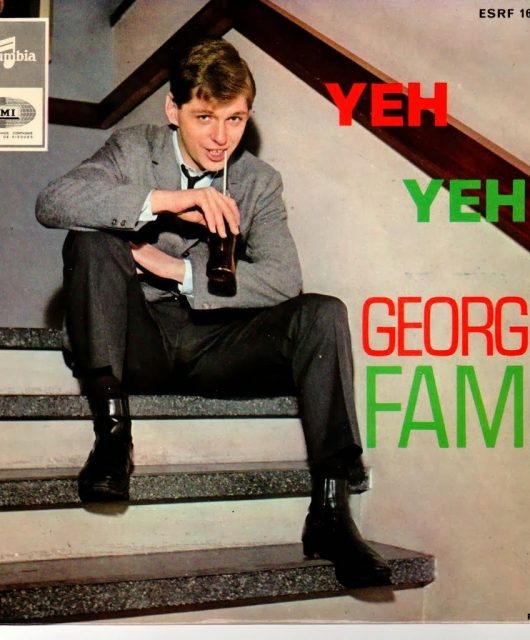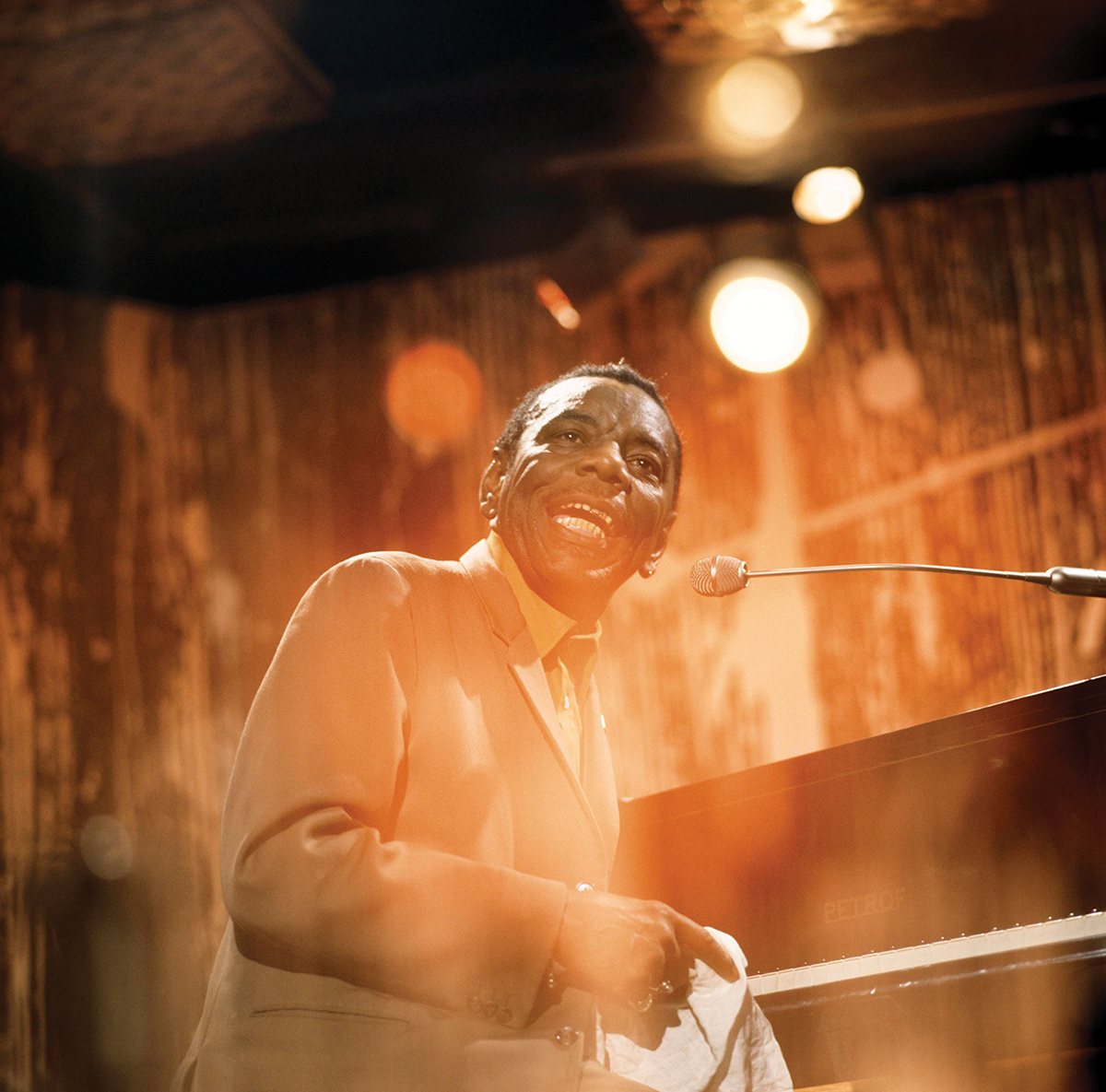A quarter of a century after his passing, we remember the Texan rockabilly pioneer Buddy Knox, who got the world on its feet with his evergreen dancefloor-filler Party Doll – Words Douglas McPherson
In 1955, a new star blazed across Texas. Elvis Presley’s scream-inducing performances shook up the lives of all who saw him, but none more so than those of Buddy Holly, Roy Orbison and Buddy Knox. On separate fateful nights in Lubbock, Midland and Amarillo, they went to Presley’s shows as aspiring country singers and came out as rockabillies.
Today, Knox is the least remembered of the three but was the first to find success. With his indelible debut single Party Doll, which peaked at No.2 in the US in 1957, he became the first West Texas artist to write his own million-selling hit.
TEXAN STAR
He inspired Buddy Holly to record at Norman Petty’s studio and during Holly’s lifetime was very much his equal as a star, wowing audiences on Alan Freed’s package shows.
Knox scored further hits with Rock Your Little Baby To Sleep and Hula Love, which he performed in the classic jukebox movie Jamboree, where he had third billing after Fats Domino and Jerry Lee Lewis.
In later years, Knox enjoyed success as a country singer and was rediscovered by European rockabilly revivalists at a fabled concert with Jack Scott, Warren Smith and Charlie Feathers at London’s Rainbow theatre in 1977. The show was immortalised on the live album Four Rock’n’roll Legends and established the market for the plethora of weekenders headlined by 1950s artists that continue to this day.
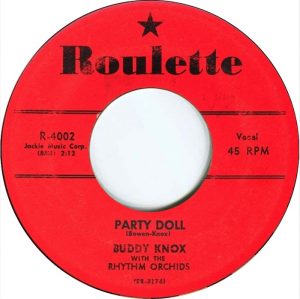
EASY-GOING NATURE
Buddy Knox was born on 20 July 1933 on a wheat farm 13 miles northeast of Happy, in the Texas panhandle. Its motto is ‘The Town Without A Frown’ and speaking to Gary James at the website classicbands.com, Knox said it was “Just as it sounds really, a nice small town to grow up and go to school in. Almost ideal.”
The place perhaps shaped the singer’s easy-going nature. Knox was always a friendly, approachable figure, never a rock’n’roll bad boy. His childhood home had no electricity and his early exposure to popular music was limited to weekly country programmes The Grand Ole Opry and Louisiana Hayride that his parents would listen to before shutting down the generator that powered their radio.
His musical talent came from his mother, Gladys, who sang on a local radio station in a gospel group with her parents and siblings. “My aunt played guitar really good and sang like a bird,” Knox recalled to Jerry Naylor and Steve Halliday in their 2007 book The Rockabilly Legends: They Called It Rockabilly Long Before They Called It Rock And Roll. “She taught me to play guitar chords. I didn’t know many songs, so I started making them up. I wrote Party Doll and Hula Love when I was about 12 or 13 years old.”
SWEET SERENADE
Knox began his musical career at West Texas State College where he formed the Serenaders with fellow students Jimmy Bowen on bass and Donnie Lanier on guitar. They played campus dances and drive-in movie theatres.
By day, Knox was studying for a masters degree in accounting – “and almost got it,” he recalled. He had plans to work for an oil company as a management trainee. But then he saw Elvis, and glimpsed a different future. He met the soon-to-be-King backstage and Presley told him that rock’n’roll was “Fixin’ to happen”.
The Serenaders immediately transformed into a rockabilly band and renamed themselves the Rhythm Orchids, taking their name from the purple colour of their matching shirts.
Party Doll was their most-requested song and Knox wondered where they might record it. When the group appeared on a radio show with Roy Orbison And The Teen Kings, Orbison suggested they go to Norman Petty’s home studio in Clovis, New Mexico.
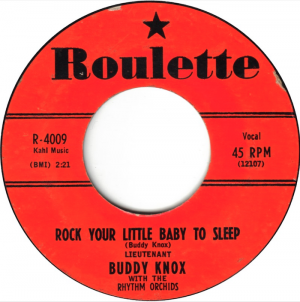
PARTY DOLL
Petty and his wife Vi, working as the Norman Petty Trio, had recently scored a No.14 US hit with their version of the instrumental Mood Indigo.
Although they’d built a studio in their garage primarily for their own use, Orbison had persuaded them to let him cut Ooby Dooby there. That recording, issued by Je-Wel, won Orbison a deal with Sun Records, where he recut the song.
Petty agreed to record the Rhythm Orchids for $60 in April 1956. Because his home was on a state highway, a session was convened from midnight till dawn to avoid recording the sound of passing trucks. It quickly became apparent that the trio weren’t ready to record. Party Doll had to be edited down from an unwieldy 14 verses, Bowen’s bass playing was subpar and they had no drummer. Petty sent them home without charge and arranged another session after a couple of weeks rehearsal.
When they returned to Clovis, Lanier brought his girlfriend Patricia Everett to play drums, although the high school marching band musician brought no drum kit, just a pair of ‘sock cymbals’ – a precursor to the modern hi-hat.
Luckily, Petty’s drummer Dave Alldred happened to be hanging out at the house and stepped in. He drummed on a cardboard box filled with cotton pillows while Everett played cymbals. The makeshift drum gave Party Doll a distinctive sound that Buddy Holly’s sticksman Jerry Allison later recreated on Not Fade Away.
TIME TO WAX
With another of Petty’s pals replacing Bowen on bass, the line-up was completed by Knox’s sister Verdi and two of her friends on backing vocals. Knox later recalled that it took 57 takes to nail the final song. They still found time, however, to wax the Knox-Bowen composition I’m Stickin’ With You with Bowen on vocals.
Knox pressed 1,500 copies of Party Doll with I’m Stickin’ With You on the flipside, on his own Triple-D label, named after local radio station KDDD in Dumas. A DJ called Dean Kelly began spinning the disc in Amarillo and it became a regional hit.
Lanier’s sister Teddy, meanwhile, was a fashion model in New York. She took a copy of the single to music publisher Phil Kahl, who passed it on to nightclub owner Morris Levy.
Levy decided to release the songs as separate singles – one by Knox, the other by Bowen – on his newly-formed label, Roulette, in January 1957. Both became million-sellers. I’m Stickin’ With You reached No.14, but Party Doll did better, hitting No.2 in the US.
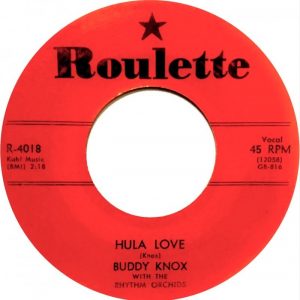
OVERNIGHT SUCCESS
Phil Kahl became Knox’s manager and secured him a spot on US television’s biggest entertainment programme of the day, The Ed Sullivan Show. Overnight, the farm boy became a star. And even though Dick Clark refused to play the song because of the hook line, “I’ll make love to you”, that couldn’t stop its runaway success.
A contemporaneous cover version by Steve Lawrence also hit the Billboard Top 10 while Wingy Manone and Roy Brown aimed versions at the R&B market.
Knox’s momentum was broken, though, when he was drafted into the US army at the height of Party Doll’s success and planned European dates including a London Palladium show had to be scrapped. He was, however, given leave to promote his follow-up single Rock Your Little Baby To Sleep on The Ed Sullivan Show, on the condition that he appeared in uniform. The disc was credited to ‘Lieutenant Buddy Knox’ and made No.23 on Billboard’s chart.
TEX MEX ROCKABILLY
The hits continued with Hula Love and Somebody Touched Me, but grew smaller with That’s Why I Cry and I Think I’m Gonna Kill Myself, a break-up song with a title that ensured many radio stations wouldn’t play it.
By the end of the 1950s, Knox had become disillusioned with Roulette who wanted to smooth out the rough edges of his rock’n’roll sound to broaden his commercial appeal. Buddy wanted to stick to his guns and knock out a raucous Tex Mex rockabilly and rock’n’roll hybrid.
Worse, he wasn’t receiving any royalties. Reportedly, Roulette ended up owning all of his recordings and cut of the publishing, scooping up all the accrued royalties and leaving Knox with nothing.
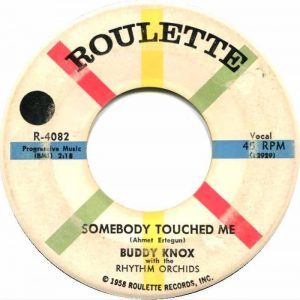
RUFF RECORDS
Moving to Liberty, Knox recorded songs about Chinese and Mexican lovers (Ling-Ting-Tong and Chi-Hua-Hua) in an effort to recreate the success of the Hawaiian-themed Hula Love, but without success.
More impressive were the gritty rocker Jo Ann on Ruff in 1965 and the Monkees-flavoured Sixteen Feet of Patio in 1966, but it wasn’t until the country-rock Gypsy Man two years later that he found himself back on a chart, this time the country listing.
After divorcing his first wife, Knox relocated to Canada in 1970 and opened a successful country nightclub, the Purple Steer, in Vancouver.
“Dad always said that Canada reminded him of Texas, only with colder winters,” his son Michael reported to the Winnipeg Free Press. “He loved Canada.”
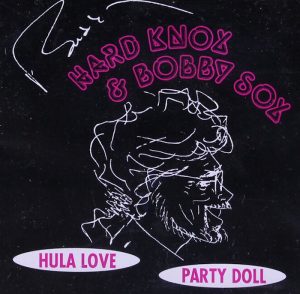
OUTLAW COUNTRY
Aligned with the outlaw country movement in America and the rockabilly revival circuit in Europe, Knox toured constantly but called Canada his home until 1990, when the onset of depression and heavy drinking brought about the end of his third marriage.
At that point, he moved to Port Orchard, Washington State, where, in 1994, he released his final album, a compilation called Hard Knocks And Bobby Sox.
In January 1999, the singer fell and broke his hip. An examination revealed bone cancer, which had spread throughout his body. He died within a couple of weeks, on 14 February, aged 65, and was buried in Canyon, Texas, not far from his birthplace.
Knox was posthumously inducted into the Rockabilly Hall Of Fame, while the Rock And Roll Hall Of Fame listed Party Doll as one of the 500 songs that shaped rock’n’roll.
Listen to the best of Buddy Knox here
Sign up to the Vintage Rock Newsletter

